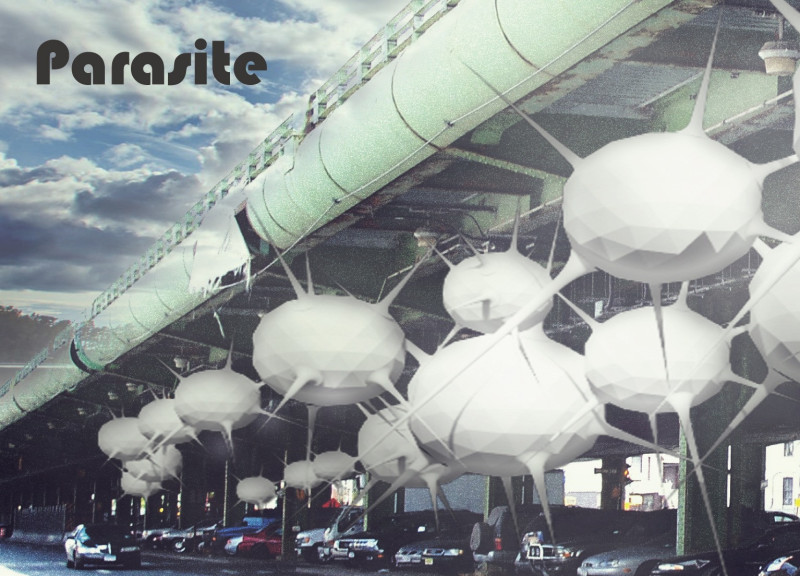5 key facts about this project
### Overview
Located in Sunset Park, Brooklyn, New York City, the project addresses the urgent need for affordable housing in an area affected by gentrification and increasing rental costs. By leveraging the existing urban infrastructure, particularly the underside of bridges, the design optimizes underutilized spaces to provide flexible living solutions that integrate with community needs.
### Spatial Strategy and Community Engagement
The project features modular, lightweight living units designed to attach beneath bridges, implementing a concept rooted in parasitic architecture. This approach not only maximizes spatial efficiency but also enhances the urban landscape by transforming overlooked areas into viable housing. Engaging local residents in the design process ensures that the living spaces reflect community aspirations, fostering a sense of ownership and investment in these new environments.
### Materiality and Environmental Performance
Focusing on sustainability, the project employs a range of locally sourced materials to minimize environmental impact. Key components include geodesic dome structures for stability, a dual-layer membrane that provides insulation and light filtration, and tension rods that facilitate lightweight support. The materials are selected to ensure durability while reducing transportation emissions, aligning with both cost efficiency and ecological considerations. This design emphasizes the importance of natural light and ventilation, creating comfortable interiors that reduce reliance on artificial lighting.






















































